Please
Note: Firefox & Google Chrome other
search engines may not suitable
Click the logo above to reach the ssMaritime FrontPage for News
Updates & “Ship of the Month”
Commenced in Passenger Shipping & Cruise Industry in 1960
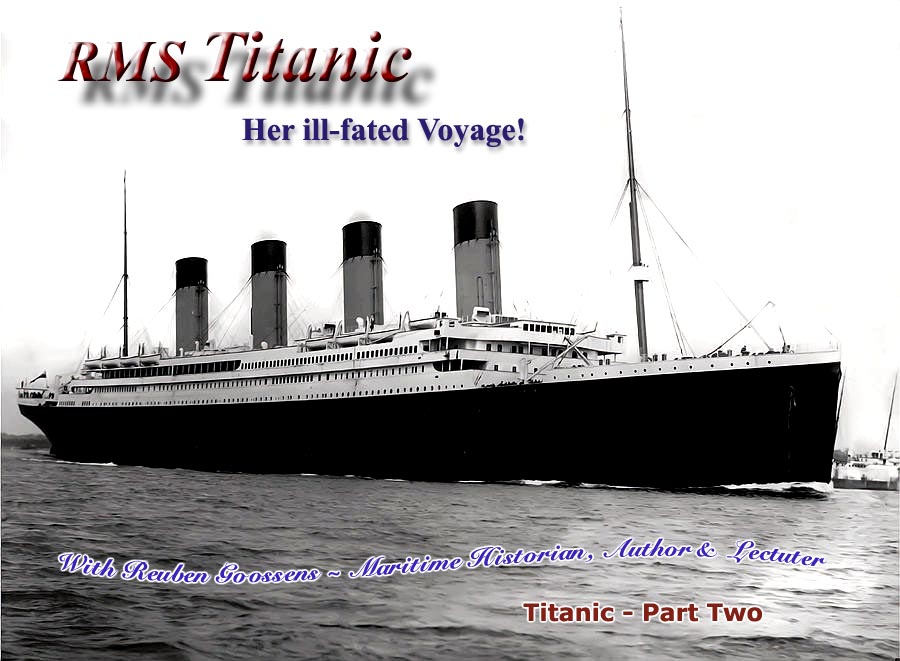
RMS
Titanic Departs & The Tragedy
*****************************
Southampton
On April 10, 1912 Titanic’s passengers
began arriving in a well-organised fashion. It all commenced at 9.30 am
when the
Both First and Second Class passengers boarded
within an hour of departure and Stewards escorted them to their cabins, whilst
First Class passengers were personally greeted by
The brand new and the pride of the fleet, RMS
Titanic departed
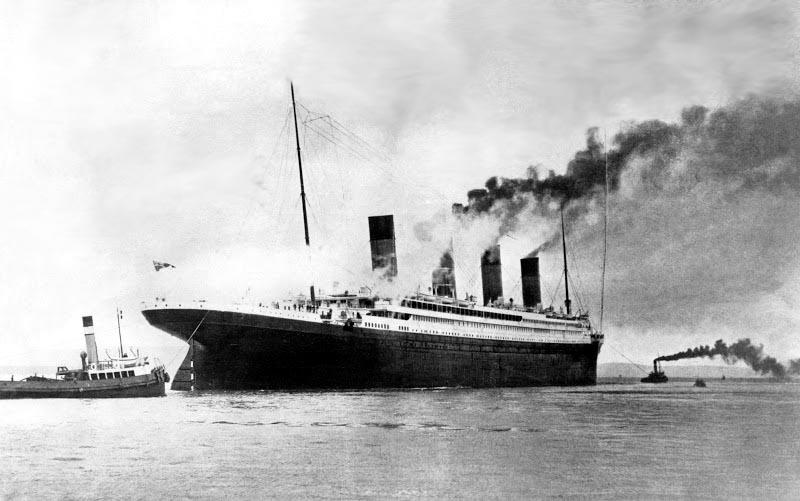
The
great RMS Titanic is seen departing
Cherbourg France
After just seven hours sailing Titanic makes a
stop at 7 PM at
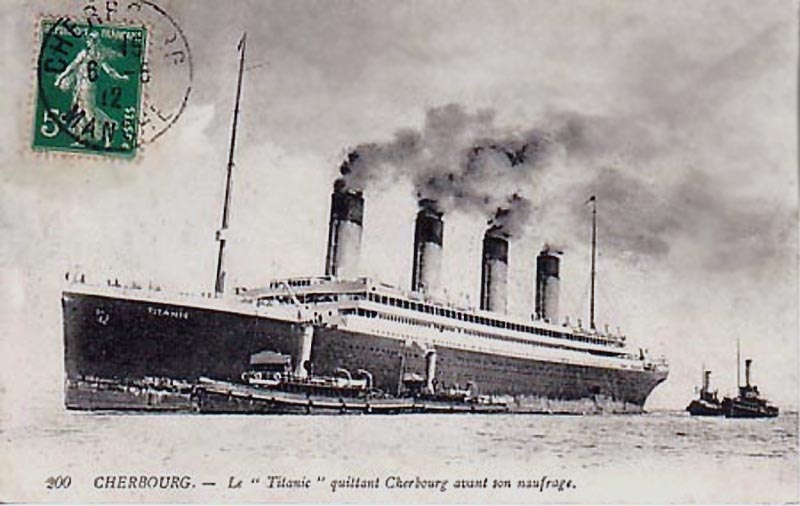
A
delightful postcard from my collection
She departs on time at 9 PM and she is
bound for Queenstown (today’s Cobh)
Queenstown Ireland
After a peaceful morning on board, Titanic
arrives on Thursday April 11, at 12.30 PM and she anchors
off shore. She takes aboard further passengers that are brought from ashore by
the tender, named suitably - the
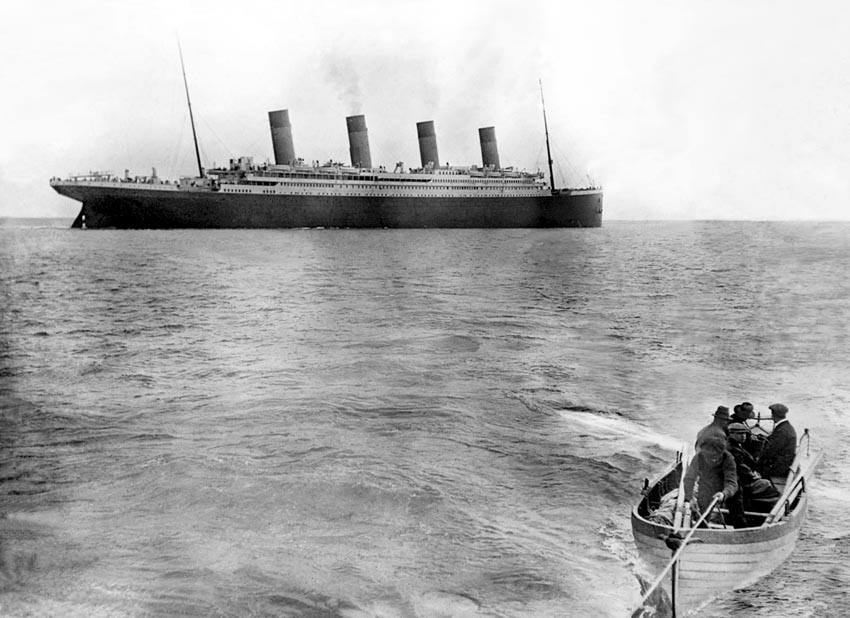
Titanic
departs Queenstown
As soon a very efficient boarding from shore
to ship was completed at Queenstown, she departed at 2 PM and she heads
west for the Atlantic bound for
Total Number of Passengers & Crew on the
Titanic:
Having taken on her final passengers in
First Class: 322.
Men 173 – women 144 – children 5.
Second Class: 277.
Men 160 – women 93 – children 24.
Third Class: 709.
Men 454 – women 179 – children 76.
Crew: 898.
Total passengers 1,308 / Crew 898 = 2,206 people on board.
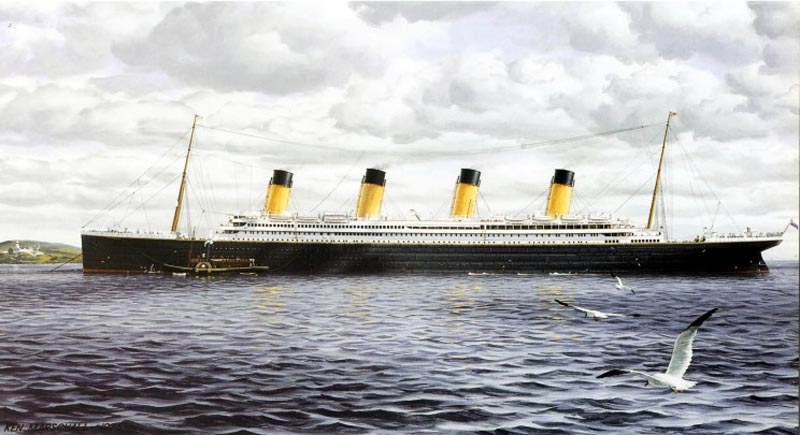
A
painting of the Titanic off Queenstown with the tender
Painting by
& © the superb artist
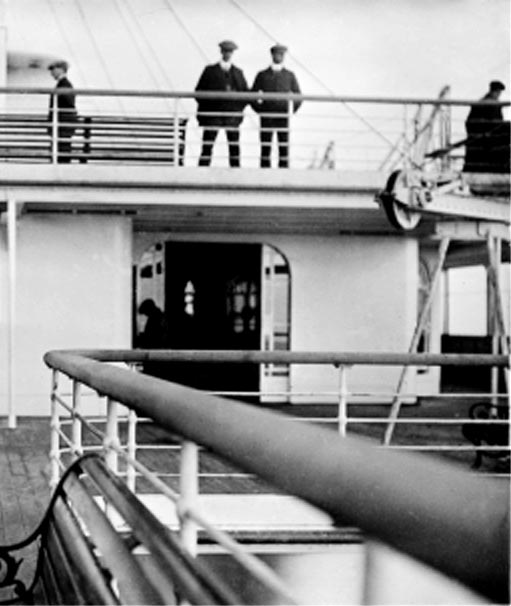
Here
we see several Second Class passengers who had just boarded in Queenstown
*****************************
The Peaceful Part of the Voyage:
The next few days are relatively uneventful as
the weather being relatively good and the sea icalm.
Passengers on board were enjoying the ships many features and venues in their respective
classes, especially in First Class with its ultimate with all its luxury and
Second Class was not far behind! As there were many
more men on board the ship than women, they tended to first spend some time in
the Main Lounge after the evening meal with the ladies, but they always headed
for their beloved Smoking Room, which was more of a deluxe men’s club and
there some would play a game of cards and drink very expensive Brandy and smoke
the finest cigars, etc, which went on into the very early hours of the morning!
The ladies enjoyed the Main Lounge and the
But as time went on slowly the temperature was getting colder and colder and things began to change! Thus whilst passengers had been enjoying the outdoors previously, now they spent more of it indoors, and just went out for a breath of air so to say!
The Titanic receives several wireless messages from other ships heading toward her reporting ice.
The vital 17 Hours and Twenty Minutes that
now follows to her sinking:
Sunday April 14, 1912:
Early in the morning reports regarding icebergs started to come in.
At 9 AM - the Caronia reported ice at Latitude: 42° N and Longitude: 50° W.
At 1.42 PM - the Baltic reports ice.
At 1.45 PM - the Amerika reports 2 large icebergs at Latitude: 41° 27’ N and Longitude: 50° 08’ W.
However, this message was not sent directly to the Titanic, but was supposed to be passed on to her as soon as the Titanic came within range of a transmitter.
At 7.30 PM - the Californian reports passing 3 large icebergs at Latitude: 42° 03' N and Longitude: 49° 09' W.
At 9 PM temperature was dropping rappidly.
The crow’s nest is ordered by Second Officer Lightoller to “keep a sharp lookout for ice.”
At 9.20 PM -
At 9.40 PM - the Mesaba
reports pack ice, field ice and icebergs in the location of where the
Titanic was sailing. However, there is no evidence that this message ever
reached
Apparently, wireless operator
10:00 PM - Temperatures are getting colder and colder. The Titanic was still sailing at full speed at 22.5 knots. The sea is calm, the skies are perfectly clear and the stars appear as brilliant points of light. But there is no moon.
At this time Frederick Fleet and
10.50 PM - the Californian sends an urgent wireless message directly to the Titanic telling them that they have stopped and surrounded by ice.
However before the Californian
could relay their position, being about 20 miles north of Titanic, the
Titanic’s wireless operator Jack Phillips angrily responded,
“Shut up, shut up. You're jamming my
signal. I'm busy. I'm working
11.30 PM
– the lookouts in the Crows Nest, Fleet and
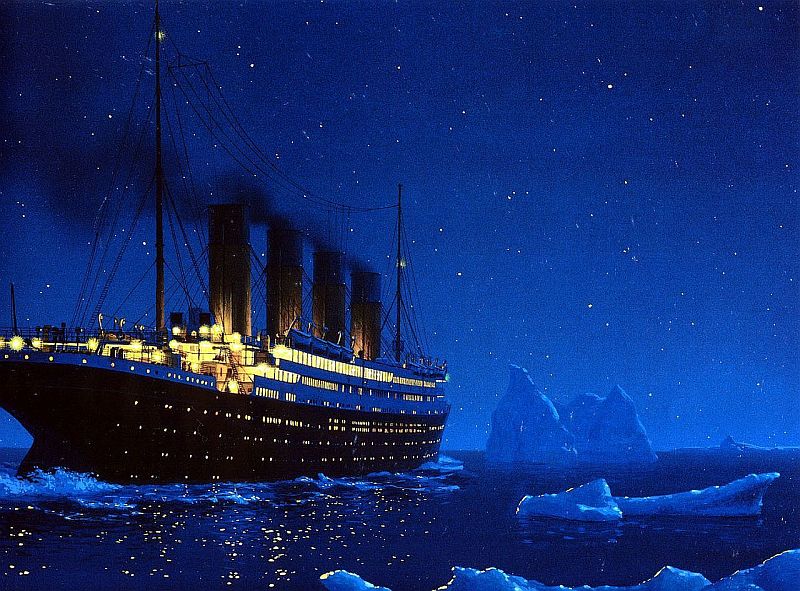
Titanic heads directly for an Iceberg
Painting by & © Ken Marschall
- website www.TransAtlanticDesigns.com
10.39 PM -
lookout
The bridge immediately sends a “Stop” signal to the engine room, and this is followed up by a “Full Astern.”
Quartermaster Robert Hitchins is urgently ordered to turn the ship “Hard-a-starboard” and the Titanic turns to the left.
However as we all know, the Titanic struck the iceberg on the starboard bow and the underwater section of the berg cut a long slice into her hull, on Sunday, April 14 at 11.40 PM and sadly the ship commences to flood.
A special comment:
Please note, although I will present an accurate timeline of events as the occurred, but I will not be going into all the horrid details of the death and tragedies that happened during that sad, sad night, be on the ship, in the water or in lifeboats, etc, for I am well aware that you may well have read much about that in the past, alternatively you will have seen much about it in movies, regardless the many inaccuracies.
However, there is one things we will always remember and that is the very brave band playing on Promenade Deck and they continued to do so until they just could do it anymore!
The question is; was their final piece,
“Nearer to God to Thee” or “

But did you know that these eight superb musicians were not actually employed by the White Star Line. The truth is, they all worked for Messers C.W. and F.N. Black of Liverpool in England and thus they were Second Class passengers and they had been doing a guest appearance that night in First Class.
Band Members Names:
J.
12.05 AM -
Captain
12:15 -AM
- Titanic's wireless distress signal is first received by the Cape Race
wireless station and the ships
12:24 AM to 01:20 AM - Eight distress rockets are fired and although some of these were seen by a ship (name withheld, but well known) in the distance, it was thought that they were the ship having a party and that they were just flares for the occasion.
12:25 AM - Captain
Smith realizes the ship is lost and gives order to start filling lifeboats “women
and children first.”
The distress signal is being sent again this
time using a corrected position of: Latitude: 41° 46' N and Longitude: 50°
14' W. This time the call for help is received by the Cunard liner
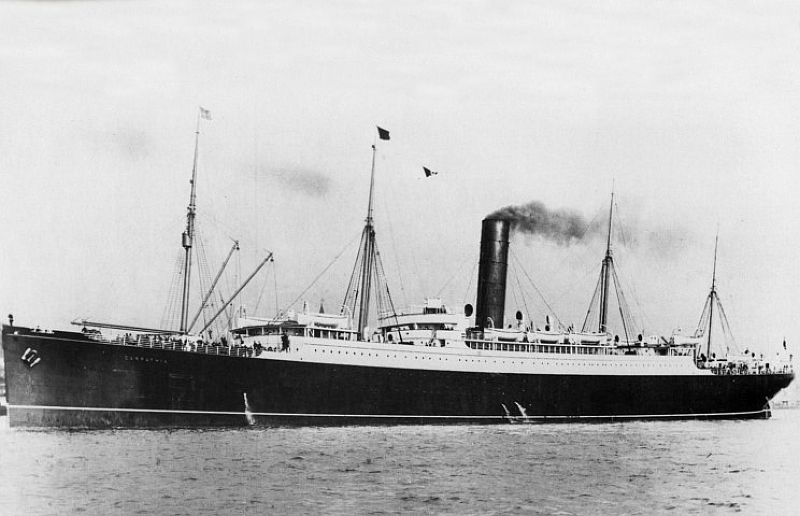
Please Note: # = number.
12:45 AM - The crew launched the first lifeboat - boat #7. Also the first distress rockets are fired.
12:55 AM - Lifeboats #5 and 6 are launched.
01:00 AM - Lifeboat #3 is launched.
01:10 AM - Lifeboat #8 is launched.
01:12 AM - Lifeboat #1 is launched.
01:15 AM - The water has now reached the name Titanic on her bow.
01:20 AM - Lifeboat #9 is launched.
01:21 AM - Lifeboat #10 is launched.
01:25 AM - Lifeboats #11 and 12 are launched.
01:27 AM - Lifeboat #14 is launched.
01:30 AM - Lifeboats #13 and 15 are launched.
01: 35 AM - Lifeboat #16 is launched.
01:40 AM – That coward J Bruce Ismay Managing Director of White Star slips into Collapsible lifeboat “C” that is then launched.
01:45 AM - Lifeboat #2 is launched.
01:55 AM - Lifeboat #4 is launched.
02:05 AM - Collapsible
lifeboat “D” is launched just as the bow of the Titanic is has almost
completely submerged, for the water is almost right up to and is beginning to
flow up to Bridge deck.
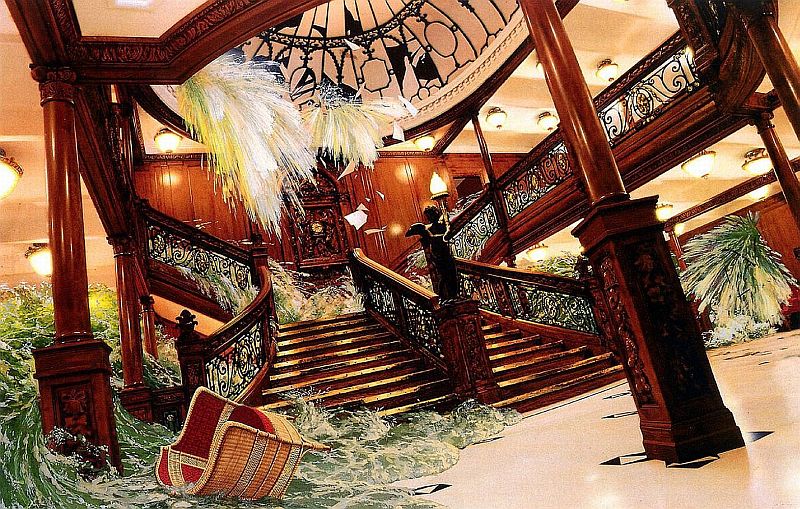
The
grand staircase floods
Painting by & © Ken Marschall
- website www.TransAtlanticDesigns.com
02:10 AM - The very last wireless distress signals were sent. “We are sinking fast … cannot last much longer” The stern is now beginning to rise rapidly above the ocean and fear levels begins to rise
02:17 AM - Titanic's distress signals abruptly end as the radio room looses all power. Both Bride and Phillips leave the radio room.
Two Collapsible lifeboats “A” and “B” floats off as Titanic sinks further, bur “B” sadly flips over and looses it passengers as the Titanic’s bos is now plunging deeper and the stern is high above.
02:18 AM - All lights on board blink just once and then they all go out – forever! Her forward funnel breaks off and it falls forward, hits the water crushing everyone in its path.
02:19 AM – Suddenly the Titanic breaks into two pieces, which happens between the third and fourth funnels. As the bow sinks even further, the stern goes downward and for a short time it rests on the surface of the sea.
02:20 AM – It is now two hours and forty minutes after Titanic struck the iceberg and what was hailed as one of the Great Ships, the RMS Titanic slips into the sea and begins its descent to the ocean floor to her watery grave!
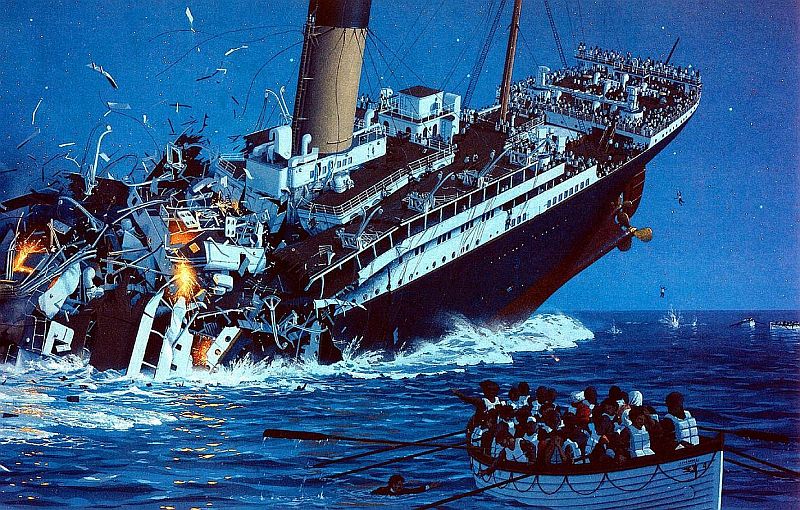
The
ship that the people called “unsinkable ship,”
slips into the sea and to her watery grave
Remember that White Star Line NEVER made such
a claim, in any shape or form!
Artist
unknown – *Please see the photo notes at bottom of page
04:10 AM - The Carpathia is now on the scene and her crews pick up the first of Titanic's lifeboats #2.
08:30 AM - Carpathia crew pick up the last of Titanic's lifeboats, which was #12.
08:50 AM
-
Saved were 703 passengers and 210 crew members, being just 32% saved in all.
However, it must be said that Third Class
passengers came off the worst as their numbers rescued was simply disgustingly
atrocious! There are not enough words of disgrace
and outrage to describe my anger of class distinction of the British, and what
is so sad, I sail frequently with P&O UK from Australia to Southampton, and
there are a good number of these arrogant stuck up Brit’s who dare to say
to me, “Oh you are a colonialist” or “one of those convicts,
eh.” Actually, no I happened to be living in Australia by choice for my
Mother and I went to New Zealand to live in 1958, and I worked in the shipping
industry, then in 1962 I decided to go and live in Australia, which I was able
to do having obtained the New Zealand nationality, and we were never immigrants
but arrived having paid our own fares. In
But it is this horrid stuck up attitude of so many of the British that still seems exist, but thankfully not in all, for I have wonderful English friends and they are totally different to those stuck up people, who generally are no-bodies in real life and are on their very first cruise ever, whilst I would have been on my 140th.or so! But the point is this, that it was CLASS DESTIBQTIONM that allowed Third Class to drown and die, for if we look at the Stat’s 63% of First Class was saved, but only 23% of Third Class. Second Class did reasonably well with 42%. Thus it is obvious that money spoke very loudly on the Titanic!
At a time unknown, Mr. Bruce Ismay, the Managing Director of the White Star Line, who just happened to be one of the lucky rich First Class men saved, and to be honest he should have stayed with his ship like the captain, sent a message from the Carpathia to the New York office, and it read;
“Deeply regret to advise you Titanic
sank this morning after collision with iceberg, resulting in serious loss of
life. Full particulars later, Ismay.” This man was an utter fool as
history proved, for he was responsible for removing the additional lifeboats
and for enforcing
September 1, 1985.

Unbelievable,
but the wreck of the Titanic is found
Titanic’s Two Sisters:
For interest and before I close, the first of the trio built was the RMS Olympic and she was the only of the three identical sisters that sailed on successfully as a Trans-Atlantic Liner. Indeed, she did operate during the war for her country, but afterwards she quickly returned to her regular service and continued to do so, until she was eventually broken up in 1937.
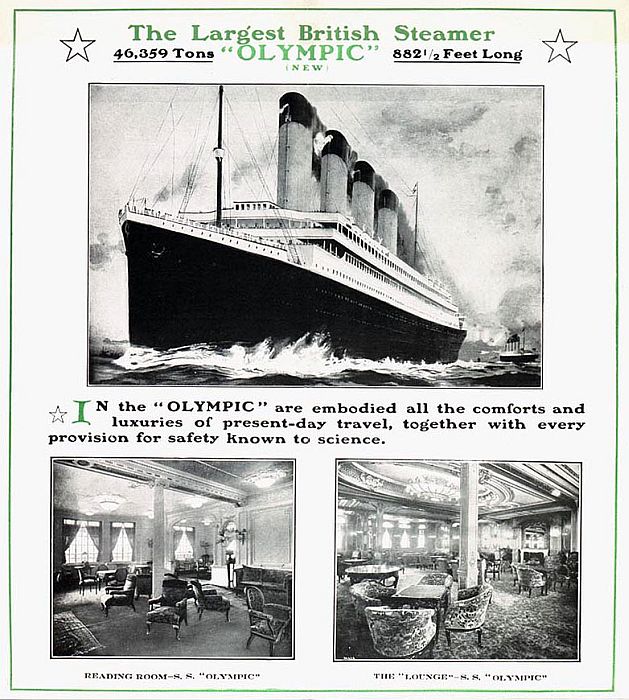
Here
we see an Olympic brochure cover
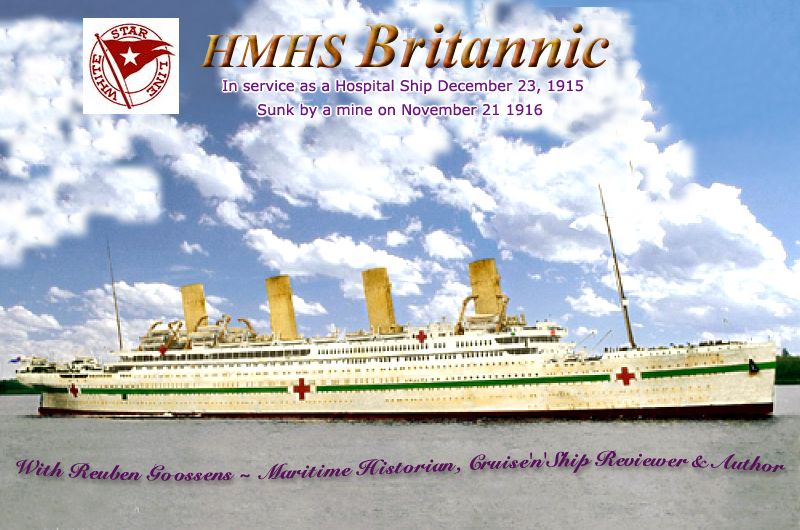
HMHS
Britannic
Then there is the third sister the Britannic that only ever served as a hospital ship during WW1, she departed on her first voyage on December 23, 1915, but she struck a mine on November 21, 1916. She sank that day, being less than a year after entering service. She was the largest of the three ships! There was a loss of 21 lives, but this ship was well equipped!
But due to the findings of the Titanic disaster, they learned a great deal, but did the passenger shipping industry really learn in those early days? It certainly started a revolution in relation to passenger safety, especially when it came to lifeboat numbers. But there were still other problems to be taken care off and a ship much later in history would highlight this!
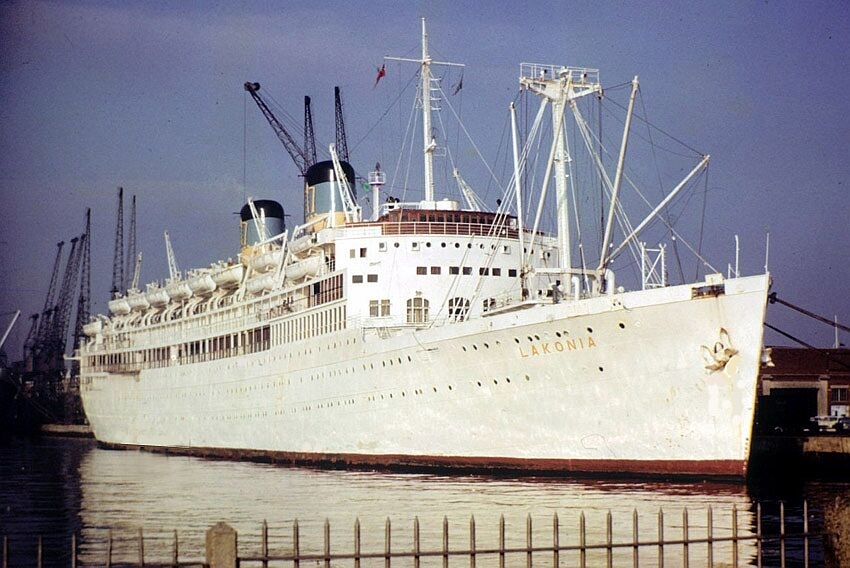
The
Greek Cruise Ship Lakonia was built as the superb
Dutch liner MS Johan van Oldenbarnevelt
This
ship in the 1960s would be responsible for another big change to maritime
regulations
It would be later in history that new and a very stringent fire regulations came into place!
This was the result of a major fire onboard the Greek cruise ship TSMS Lakonia, which in December 22, 1963 caught fire in the
hairdressing Salon and it spread rapidly, which resulted in the loss of 98
passengers and 30 of her crew. There was an attempt to tow the ship to port,
but she sank several days later.
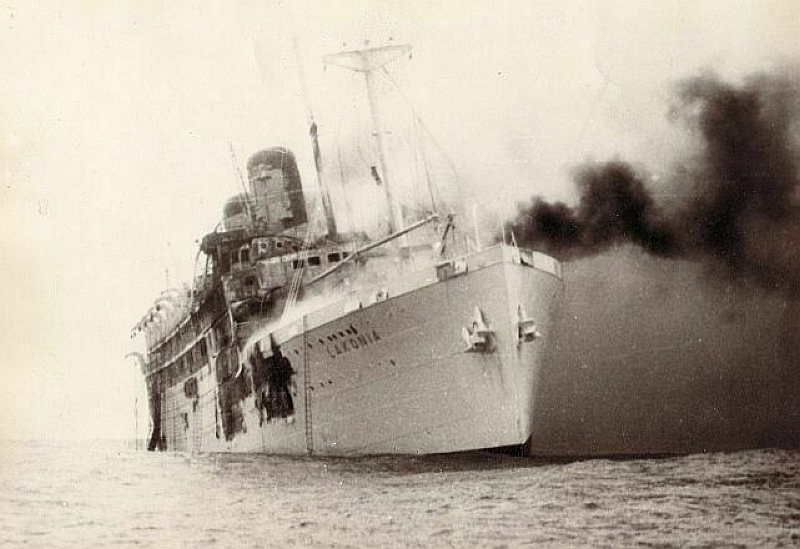
Photograph by
& © Gerhard Jourdan
The new regulation that resulted is called SOLAS, or “Safety Of Life At Sea.” Obviously SOLAS is regularly updated and it is one of the most difficult regulations to keep up with. That is why many of the beautiful classic ex liners that are now cruise ships have gone to the breakers rather than keep them sailing for the cost of upgrading them is vast.
Yet thankfully there are still a number of superb ex classic liners still sailing as cruise ships to this day and their owners ensure that they are kept up to date and superbly maintained to the very highest degree and everything I have seen whilst on board these ships are in perfect shape! It is due to ships like Titanic and Lakonia that the maritime/shipping industry has learned so much and we now safely sail the seven seas!
For interest, there will be a “Deck Plan” available at a later date
Remembering
the RMS Titanic!
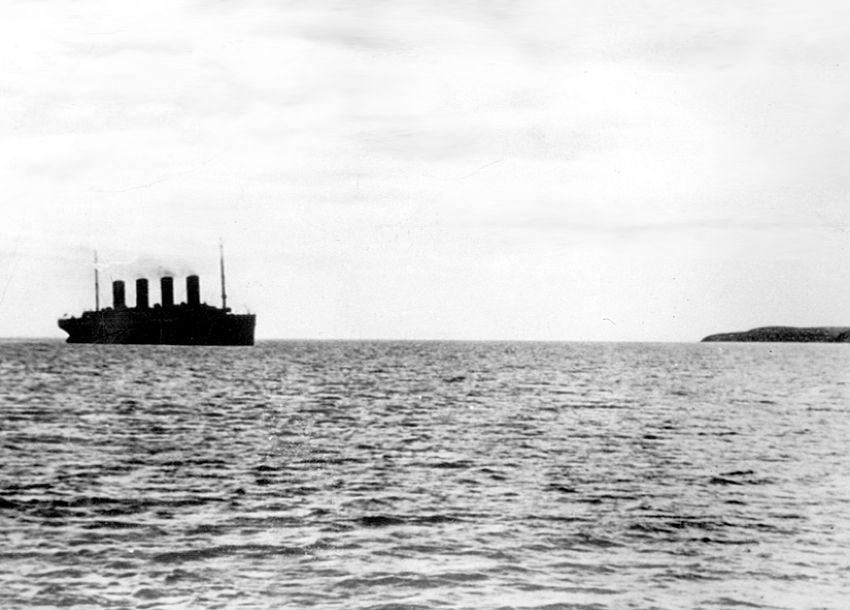
I
felt that this was best served with this silhouette photograph of her as it is
the very last photograph ever
taken of the RMS Titanic as
RMS Titanic Index:
Part One
Part Two
Part One
Also visit the RMS
Olympic & HMHS Britannic Pages
********************************
Use the Back button on your browser or
Close the Page to return to the previous page
or go to our INDEX
Where you will discover over 1,125 Classic Liners & the 1914 built MV Doulos Feature
ssMaritime is owned & ©
Copyright by
